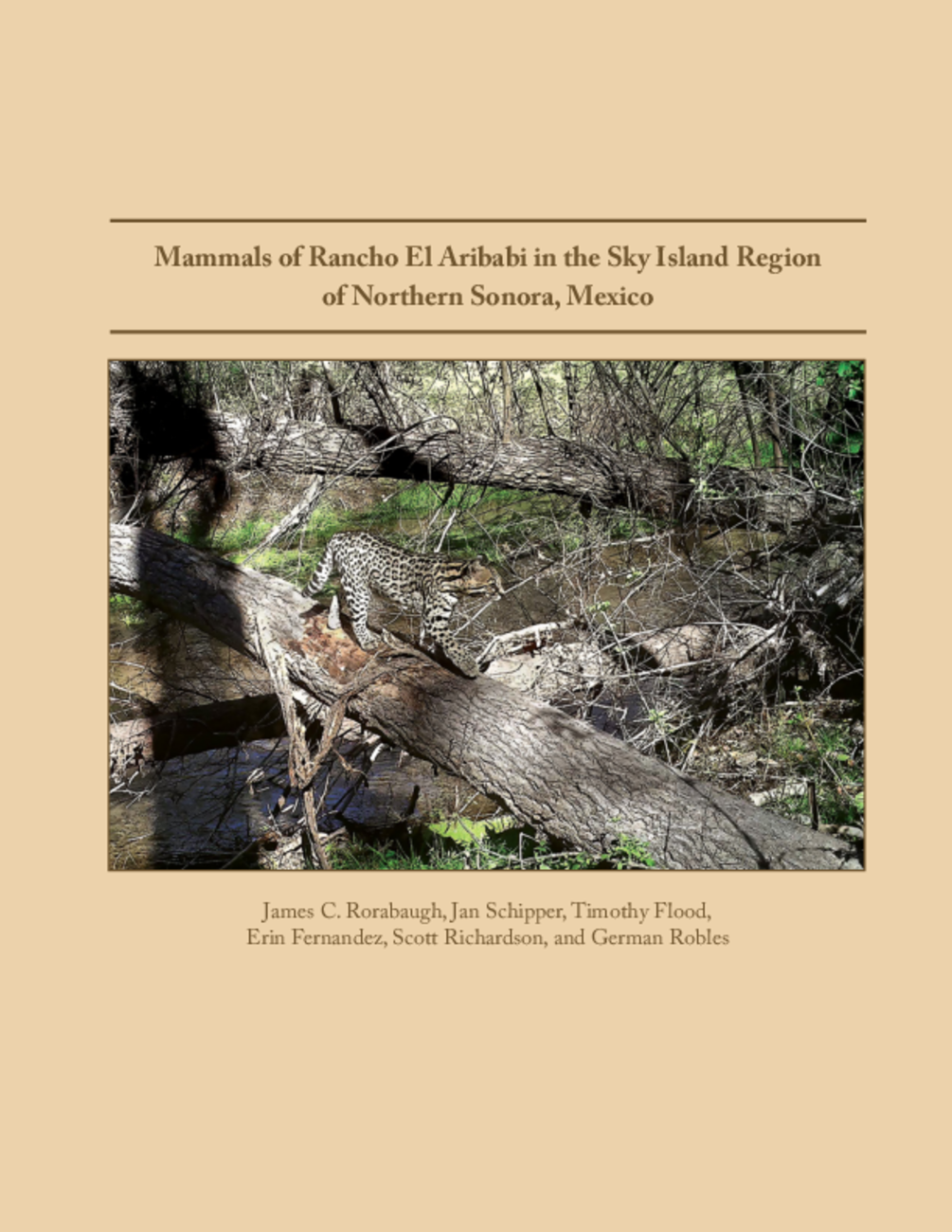Mammals of Rancho El Aribabi in the Sky Island Region of Northern Sonora, Mexico
The Mammals of Rancho El Aribabi fills an important gap in the detailed knowledge of the diversity and abundance of the mammals in the Sky Island region of the U.S. and Mexico borderlands. The multiyear camera trapping effort captures a thorough inventory and baseline of this private protected area and conservation ranch in the heart of a migratory corridor that allows movement north and south in the high latitude portion of the Sierra Madre.
I have had the privilege to work with the authors as editor in the publication of this work for the past several years. First, as a future contribution of the Proceedings of the Desert Laboratory of the University of Arizona. In this capacity, I oversaw an external review process with two independent scientific reviewers as well as an editorial review. The authors undertook edits and modifications based on the reviews and submitted an updated manuscript addressing all changes made. Unfortunately, due to my departure from the University and the cessation of the Proceedings of the Desert Laboratory this work was not published in that venue. However, the fully edited and richly illustrated manuscript is presented in its entirety here for broad dissemination via a freely available digital version and on-demand hard copies.
On its own, this work provides careful and important site-specific data on dozens of mammal species that represent a portion of the rich fauna of the Sky Islands. At the regional and international level, linked with other robust camera trapping and observation-based studies, it illuminates continued connectivity across an increasingly fragmented landscape. The importance of protected areas and local leadership as exemplified by the Robles family and Rancho El Aribabi are some of the strongest approaches to lasting conservation. The careful documentation presented here adds another cornerstone to a network of efforts and individuals working to understand and protect the beautiful and wild places of the borderlands.
Benjamin T. Wilder
January 2023

